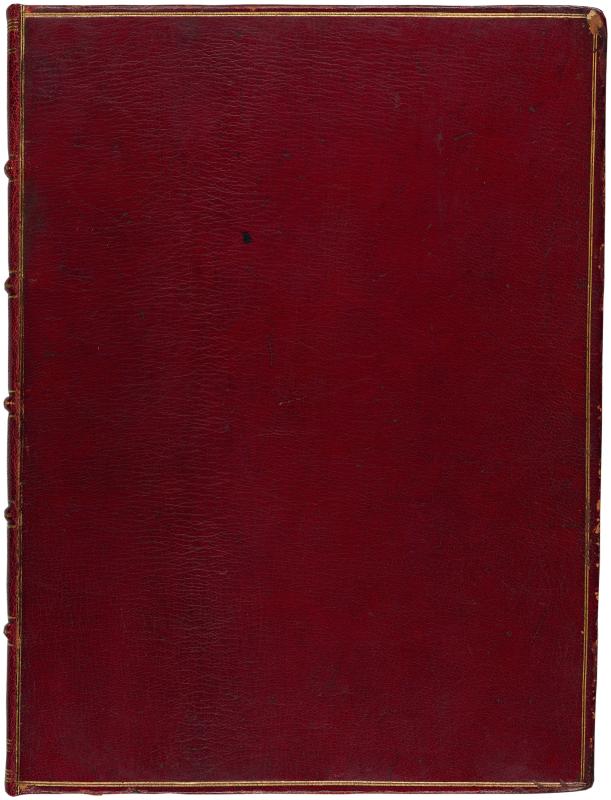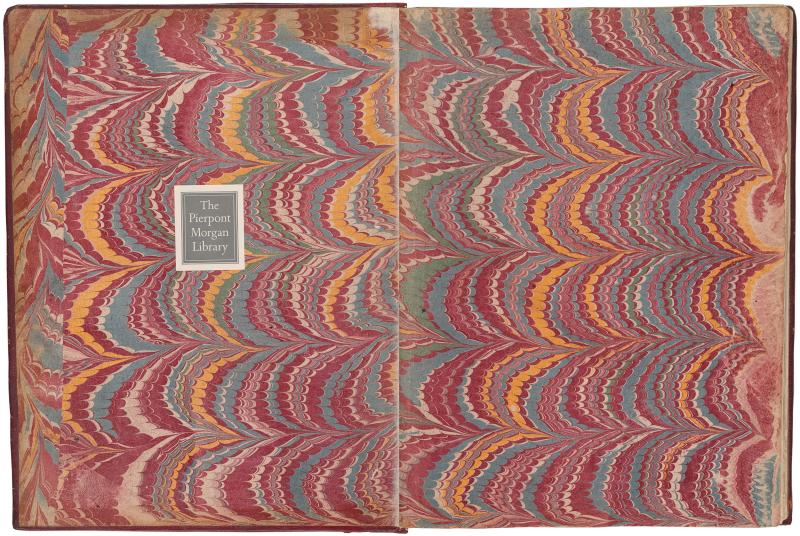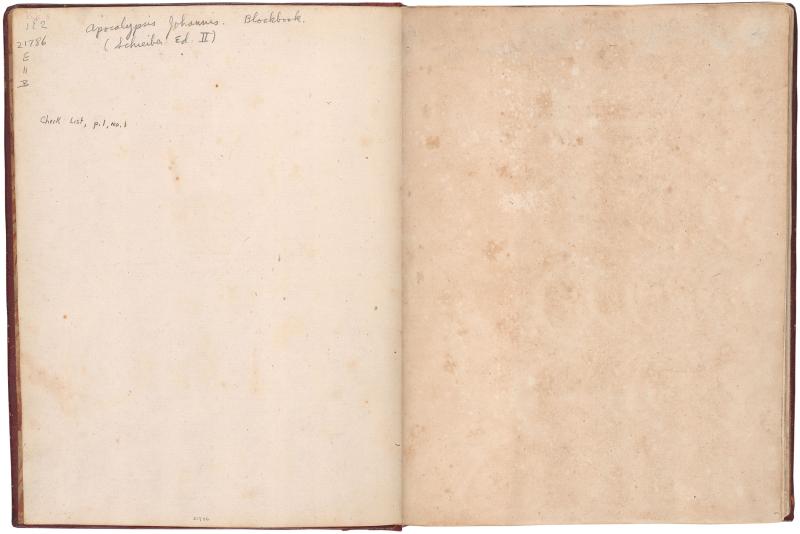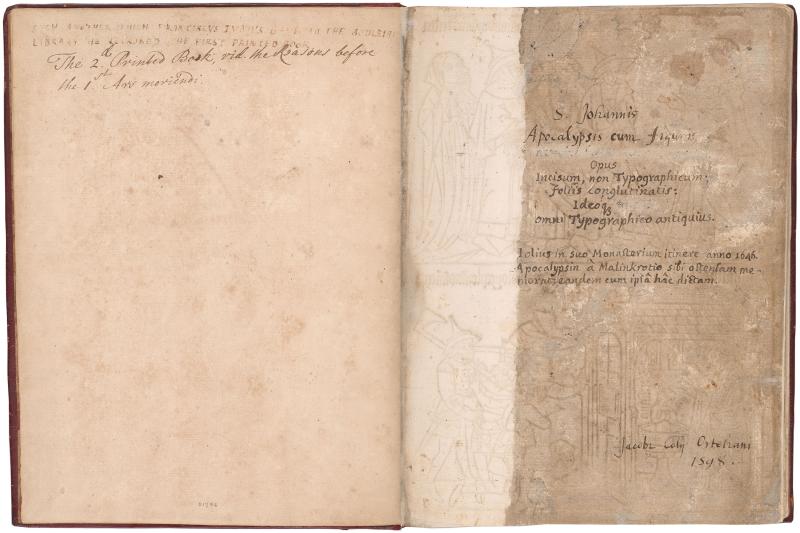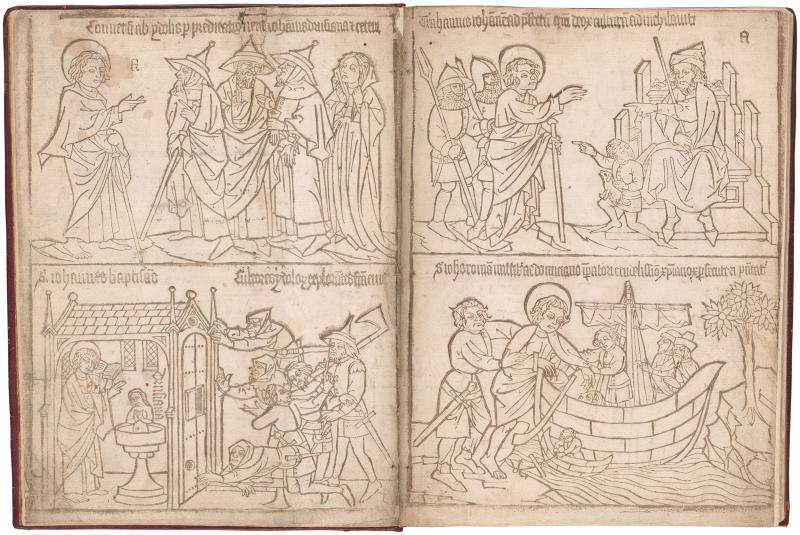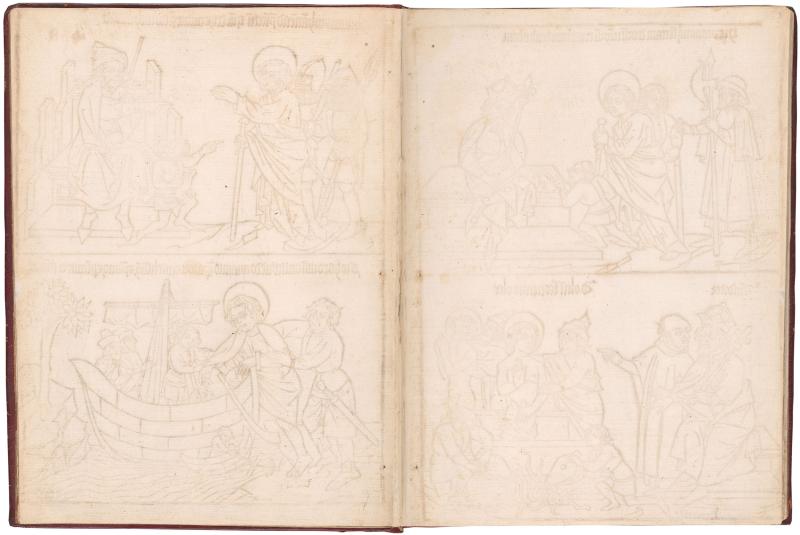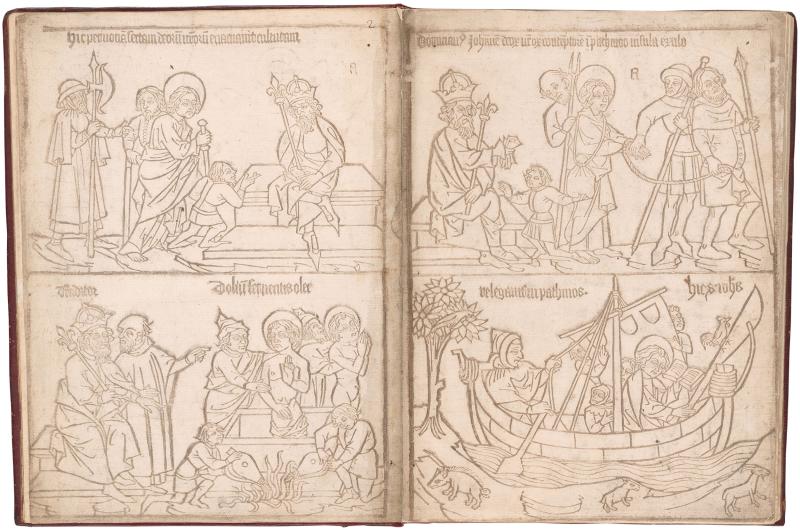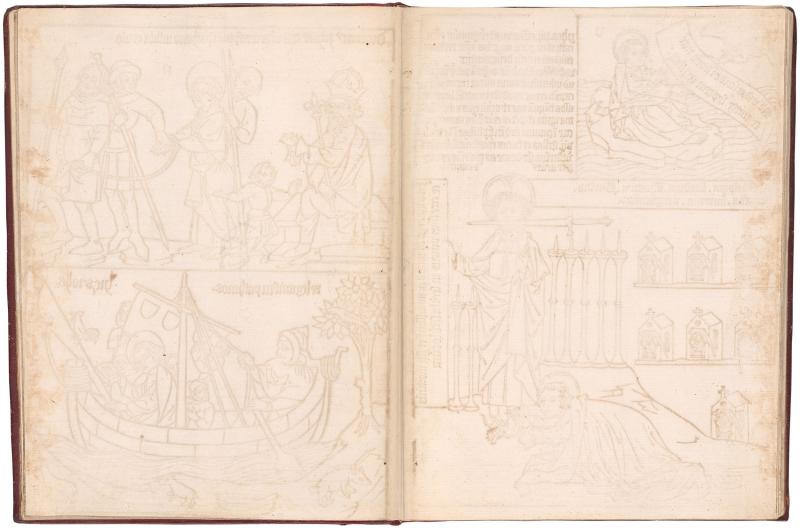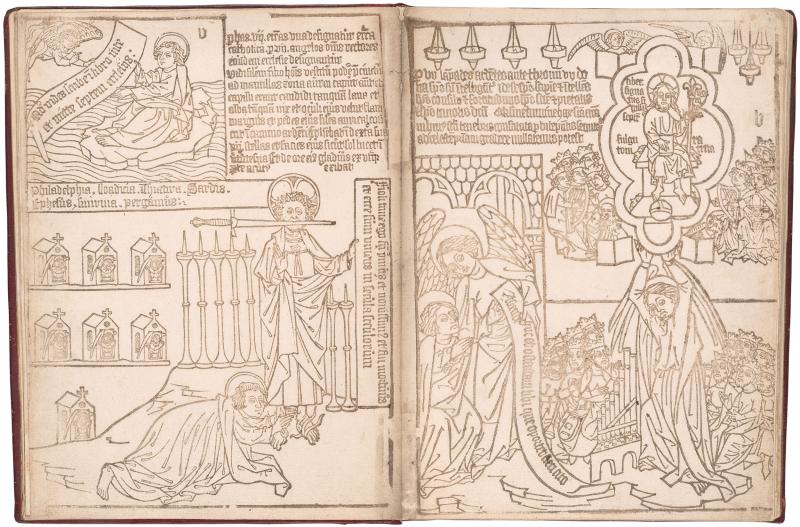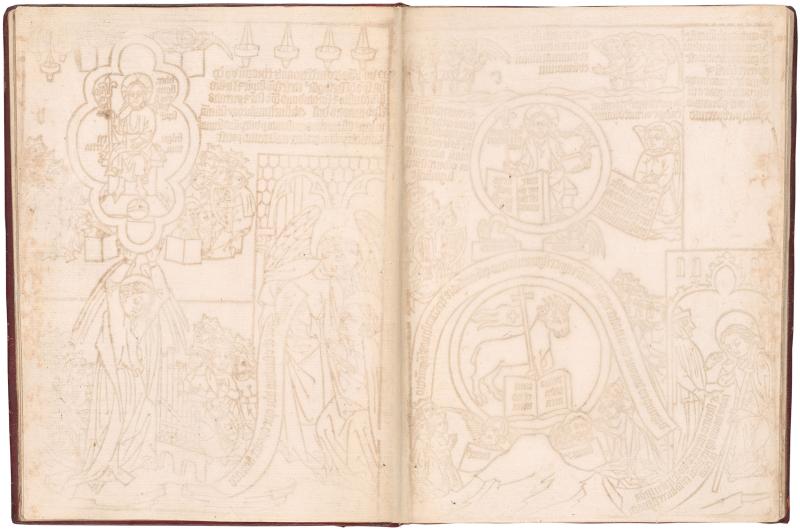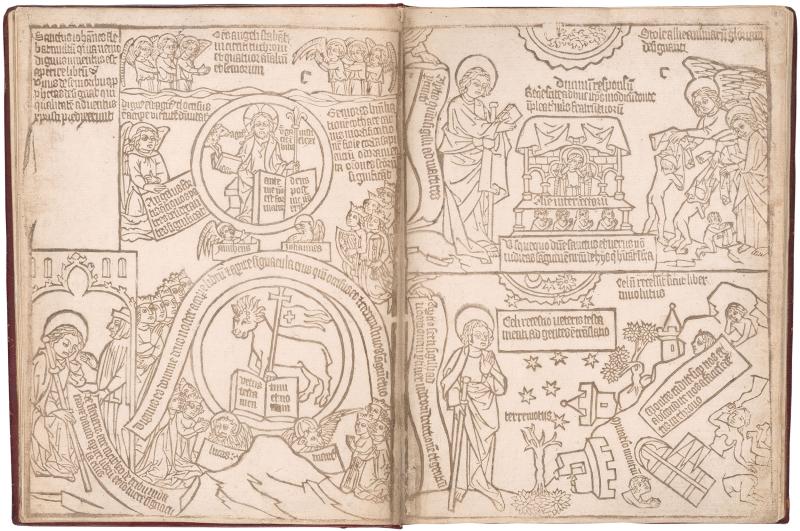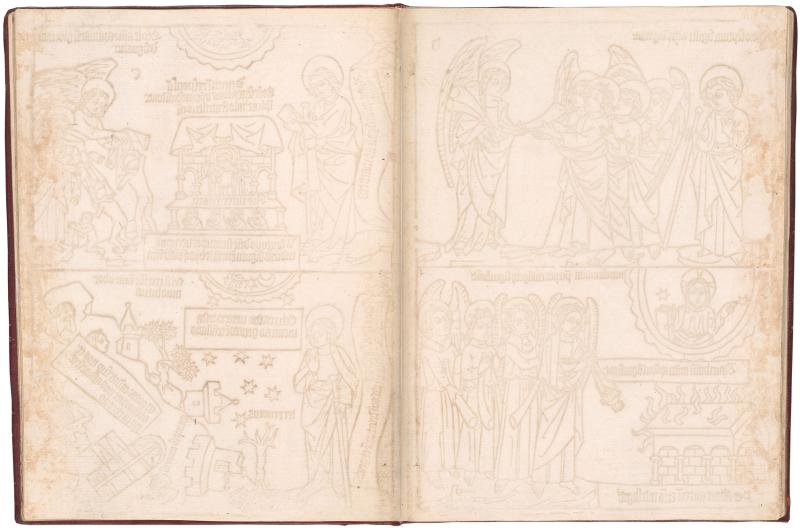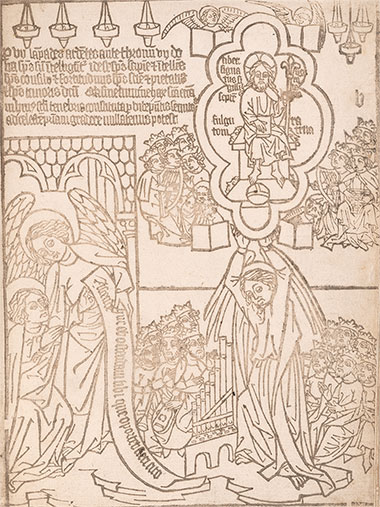
A blockbook is a genre of late-medieval book produced entirely from woodcuts, where the text and image are carved together into a wooden block and printed. Blockbooks are typically printed on one side of the paper only. This is due to the fact that printing was accomplished by placing the paper onto the woodblock and then rubbing the paper so that the ink would transfer from the wood to paper. This produced an embossed impression of the woodcut on the blank side of the sheet. Because of this rubbing process, both sides of the sheet could not be printed. The ease and speed of printing a blockbook allowed them to be produced to order, the first print-on-demand books.
There are about ten different editions of the Apocalypse blockbook, which were produced in the Netherlands in the 1450s–1460s and Germany in the 1460s–1480s. The Netherlandish examples derive from illuminated manuscripts produced in France and England in the 13th century, such as Morgan M.524, after which the compositions disseminated up the Rhine River into Germany. Each edition was produced from a unique set of woodblocks.
PML 21786 belongs to the earliest Netherlandish edition, which is found in two states: state 1 exists in only one copy, now at the John Rylands Library in Manchester, printed around 1450–52, while state 2 (the Morgan copy) includes two additional woodblocks (leaves 3 and 4) illustrating the life of St. John and alphabetic signatures were added to all of the blocks to provide a page order. The watermarks in the paper of the Morgan’s copy suggest that it was printed in the Netherlands around 1460–62.

